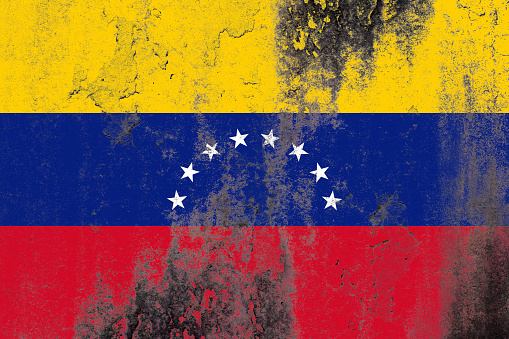What Kind of Economy Does Venezuela Have?
Venezuela’s economy is primarily based on the exploitation of petroleum, which is one of its primary exports. The country also produces steel, aluminum, textiles, apparel, and beverages. Its main cash crop is coffee, but other staples include rice and corn. Most of the country’s cropland is located in the northern mountain ranges. In the interior, cattle grazing is practiced in the Llanos and Maracaibo Lowlands. Interior forests are farmed through shifting cultivation or in small cleared riverine plots. Less than one fourth of Venezuela’s land is used for crop production and grazing.
Venezuela’s economy is based on petroleum exploitation
The economy of Venezuela is based on oil and gas. The country’s oil production has plummeted to its lowest level in 70 years. Moreover, the country’s government has been unable to increase the production rate. This has caused the country’s currency, the bolivar, to depreciate.
While oil exploitation was a major source of Venezuelan revenue, the country’s economy has been struggling to recover from its oil crisis. The country’s government had a very short term view of oil exploitation, and tried to maximize the fiscal revenue from the oil industry.
Oil production and exports are key to the country’s economy, but this resource curse can affect government governance. Because petrostates rely more on export income and less on taxes, their governments often have weak ties to their citizens. As a result, the leaders of these countries can use the wealth of their resources to suppress opposition and repress dissent.
The low oil price is the primary cause of Venezuela’s current economic crisis. The country’s oil resources are vast and concentrated in the Orinoco heavy oil belt. The low oil price has exposed many flaws in its oil reserves. The main problem is that most of Venezuela’s oil reserves are heavy oil, which is thicker and more viscous than light oil. This makes heavy oil expensive to extract.
It produces steel, aluminum, textiles, apparel, beverages and foodstuffs
While the United States is still the leading producer of primary aluminum, its share of world aluminum production has dropped to 23% from 30% in 1990. This decline has been caused by a restructuring of the world’s aluminum industry that began in the late 1970s. Other major aluminum producers include Canada, Brazil, Norway, Venezuela, and several countries in the Persian Gulf region.
Venezuela’s manufacturing sector contributed 15.4% to its GDP in 2009. This sector has been severely hampered by the lack of private investment and an overvalued official exchange rate that inhibits exports. The country produces and exports steel, aluminum, textiles, apparel, and beverages. The country also assembles cars for the domestic and export markets.
The newly printed currency has done little to contain Venezuela’s hyperinflation. As a result, businesses are closed and prices are rising. The government is trying to stem the spiral of inflation by increasing taxes and raising the minimum wage. In some states, people are taking to the streets to buy food and water.
Venezuela has historically relied on oil prices as a major source of income. It is one of the founding members of the Organization of Petroleum Exporting Countries (OPEC). In 2002, it hosted OPEC’s Second Leadership Conference, and its former Minister of Energy was appointed Secretary General. Oil prices fell in the following year, forcing the Chavez administration to expand OPEC-inspired production cuts. In 2002, oil represented a quarter of Venezuela’s GDP and about 73% of its export earnings. It also accounted for about half of the country’s central government operating revenues.
It exports steel
In the early 1950s, the government of Venezuela established a steel mill near the confluence of the Caroni and Orinoco rivers. The plant produced seamless pipes for the oil industry. In 1975, the Venezuelan government nationalized the plant. This allowed it to meet its growing national demand for steel. The mill was then financed by the Venezuelan Investment Fund.
During the 1980s, the mining sector provided a large portion of the Venezuelan economy. The country was a leading producer of direct-reduced iron and was among the top ten producers of bauxite, alumina, and primary aluminum. In 1988, it produced 1.3 million tons of aluminum. The country was also one of the leading producers of iron ore and phosphate rock in Latin America. Its other major exports included diamonds and ferroalloys.
The steel industry in Venezuela remains under pressure from foreign competition. In the early 1990s, the country’s production increased by 20% to about 3.6 million tons, but the internal demand remained static. In addition, there were complaints about dumping that inhibited greater market penetration. In addition, the government provided subsidies for the Sidor steel plant through special foreign exchange rates, which allowed the plant to pay its debts at a high rate. In 1982, the United States Department of Commerce accused Sidor of selling steel at 40% below its value.
It produces only 30% of its food supply
Food production in Venezuela has been inadequate for years, with domestic production barely meeting demand. Adding to the shortage is the fact that many of the country’s agronomists, who are trained to detect and combat diseases, have fled the country. This is resulting in declining production of staples such as rice and potatoes. Last year, rice production fell 50 percent. According to the country’s rice growers’ association, this was caused by a fungus called “rice mite.”
Historically, the United States supplied most of Venezuela’s rice needs, but now Brazil is vying for the lucrative Venezuelan market, mainly due to cheaper prices. Earlier this year, Venezuela reduced its rice production by nearly 40 percent due to shrinking fields and higher fertilizer costs. Additionally, Venezuela is unable to produce its own wheat, relying on imports solely. The country imports most of its wheat, primarily hard red winter wheat, which is used in pasta products.
As a result, the food shortage in Venezuela has become even more acute. The country’s economy is in free fall, and food prices have risen. In the past year, the average Venezuelan lost 19 pounds. Meanwhile, the number of children with severe malnutrition is soaring. Morales is concerned about her six children, three of whom have been diagnosed with severe malnutrition. In particular, she worries about the health of her 10-month-old baby.
It exports coconut water
Coconut water is an ancient tropical drink with various traditional uses. It is also described as a “sports drink” and has attracted the attention of manufacturers as a functional natural drink. It is low in matter content and mostly contains sugars and minerals. The quality of the coconut cultivar determines whether it can be used for food or beverage production.
Venezuela’s economy has been based on oil exploitation, but has recently started to diversify by producing and exporting mineral products. Until the 1980s, the country was able to benefit from high oil prices and had a high standard of living. It was also able to develop domestic industries and reduce its reliance on imports.
It exports textiles
The textile industry of Venezuela produces an array of goods and products using both natural and synthetic fibers. These include top-grade cotton, wool, llama, alpaca, angora, and vicuia. Its products are sold to both local and foreign markets. Venezuelan textile businesses also make use of online marketplaces, such as Textile Infomedia, to help them sell their goods.
The country has been a rentier state since the 1920s, but since the 1950s, it has enjoyed steady growth and the highest standard of living in Latin America. The oil industry was discovered during a 1922 strike and a new petroleum law was signed in 1945, allowing American oil companies to work in the country. This led to an agreement based on a 50-50 principle with Standard Oil of New Jersey.
Textile exports from Venezuela to the United States were valued at US$81 million in 2011. The value of textiles exported from Venezuela to the United States in that year was US$81 million, according to the United Nations’ COMTRADE database.



